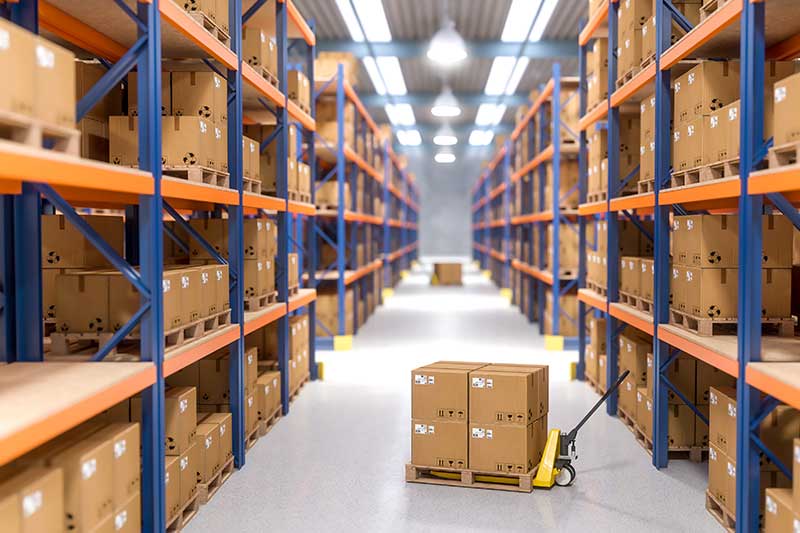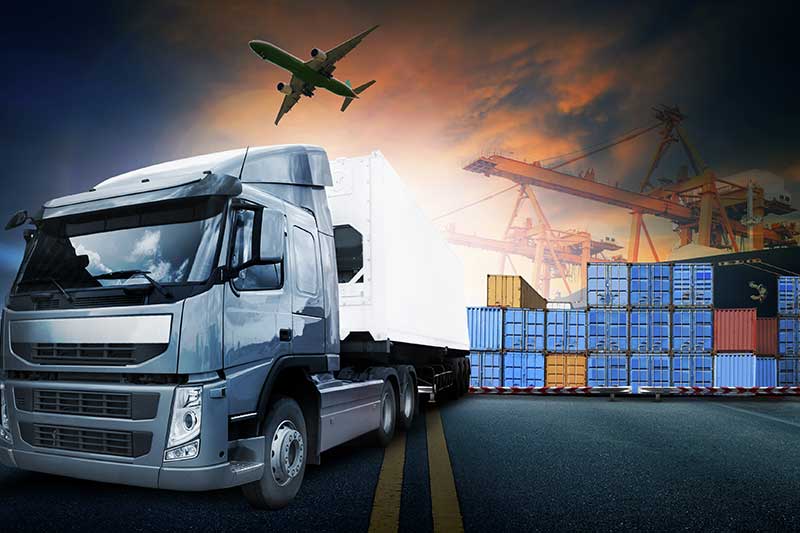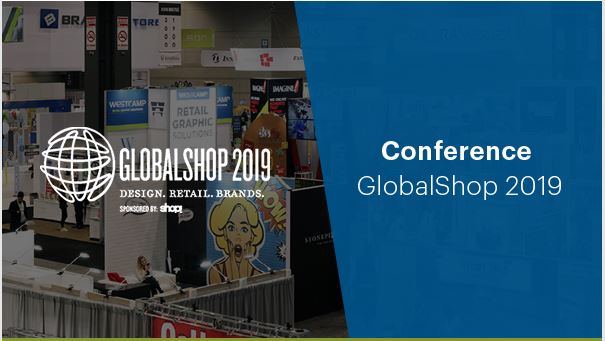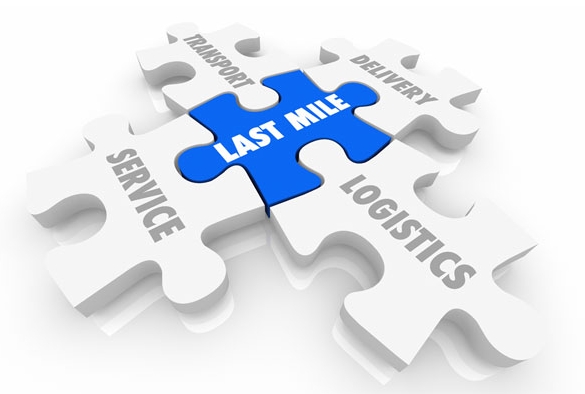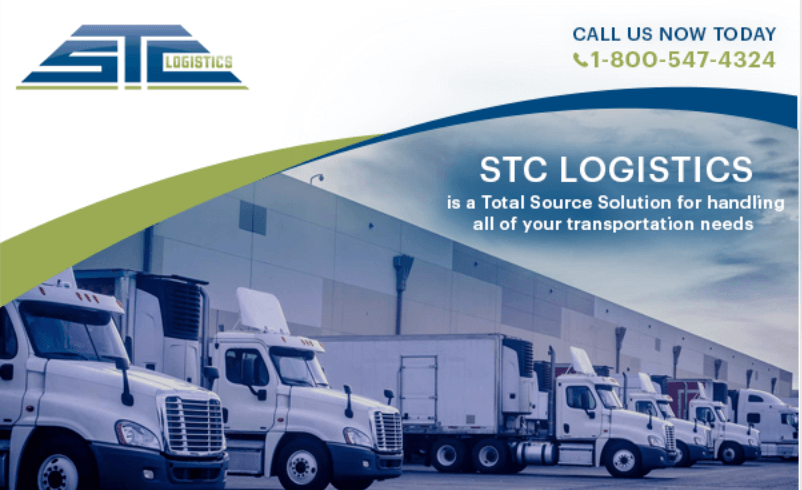Category: Uncategorized
Top Tips To Find A Reliable 3PL Provider
There are numerous benefits for a scaling business when outsourcing e-commerce warehousing to a 3PL provider (third-party logistics provider). Good 3PL providers are experts in the following fields:
- Keeping track of pallets
- Paying rent
- Maintaining equipment
- Hiring warehouse workers
- All necessary operational tasks
But that’s not all. All those tasks can be completed by 3PL’s more efficiently, cheaper, and quicker than in the company’s own warehouse.
The Advantages of 3PLs
As an example of the benefits of using a 3PL, some recent data points are listed below. An outsourcing study found the following:
- 3PL fixed logistics cost reduction – an average of 23%
- 3PL inventory cost reduction – an average of 6%
- 3PL logistics cost reduction – an average of 11%
To find the perfect 3PL provider for your company, there are a handful of questions you will need to answer.
What Do You Require?
As they apply to your company, regarding your metrics and needs that matter most, where does the 3PL stand? Get the 3PL to provide answers to these questions:
- How quickly do they respond to changes?
- Do they exhibit ongoing process and cost improvements?
- In the event of a recall, how do they find a product’s location?
- How do they manage parameters for stock rotation?
Extra Offerings?
Beyond the basics, does the 3PL offer business solutions and intelligence? As an example, an introduction of you (and other e-commerce clients) to technology providers related to your field would be a nice perk offered by a good 3PL.
Can You Define Capacity and Abilities?
Look at the talent of the 3PL being considered. How deeply does it run? Nearly half of today’s shippers consider the experience of a specific 3PL in the industry in which the shipper is involved when they rate 3PLs in general.
What If…?
Disasters happen. In the case of a disaster, is the 3PL prepared? What is their plan for the following?
- Water-related transportation disruptions
- Technology outages
- Labor stoppages/shortages
- Disaster preparedness and other risks
How Is the Money?
You’ve probably heard the old adage “Money makes the world go ‘round.” Businesses rely on money – there can be no doubt. Financially speaking, how strong is the 3PL? Your 3PL is a type of partner – and a partner should have the available resources for an investment (of sorts) in your company.
Is Your Company Growing?
The ideal answer to this question would, of course, be a resounding “Yes!” So, let’s just say that your business is growing exponentially. Will that 3PL be able to keep pace? Key factors are scalability and flexibility. Not only must they be able to handle your current requirements, as requirements change in the future (while your company grows), your chosen 3PL must be able to adapt.
Technology Is Constantly Changing – Is the 3PL?
If there’s one thing that’s constant, particularly where technology is concerned, it’s change. Ironic, isn’t it? Find out how much of the annual IT budget of the 3PL you are considering is spent on innovation-related projects. Your company’s roadmap and IT strategy must be completely aligned with the 3PL’s.
The representatives of STC Logistics can answer all of the above questions in the most positive and helpful way possible. Our 3PL capabilities are exceptional. We are committed to providing the most efficient and effective solutions in logistics and technology. We place no limit on destination, size, or weight – worldwide. We will deliver flexible, superior solutions, on a daily basis, to meet the logistics requirements of our clients. Contact us today to find out more.
Understanding The Basics Of Freight Class Calculations
To determine which NMFC class one’s shipment falls under, he or she must first calculate the freight class codes. By doing this, buyers and sellers can estimate their freight shipping costs with greater accuracy and ultimately improve their bottom lines. When it comes to freight class calculations and shipment preparations, there are various important details to keep in mind:
An Overview of Freight Class Factors
- Density: This is the measurable amount of space your freight takes up (measured by pound per cubic foot). Oftentimes, it is used to determine one’s freight class code and freight shipping cost.
- Ease of handling: This indicates if one’s shipment requires special attention, is hazardous or fragile, and is easy or difficult to handle.
- Liability: High value commodities and freight often belong to a higher freight class because of the increased risks of theft and/or damage.
- Stowability: Is your freight stackable, hazardous, flammable, or perishable? These factors often determine if your goods can be shipped with other materials. This, however, depends on the regulations that apply to each case.
How to Calculate Freight Class
Now that you have a basic understanding of freight class, below are the important steps to take when calculating freight class:
- Measure the depth, width, and height of each item in the shipment (make sure that you are measuring to the farthest points as well).
- Multiply the three measurements to acquire the total cubic inches of the shipment (height x width x depth). If you are shipping multiple items, repeat the step for each item and then add everything up at the end.
- Calculate the cubic feet of the shipment by dividing the total cubic inches by 1,728.
- Finally, calculate the density of the shipment (pounds per cubic foot) by dividing the shipment’s weight (in pounds) by the total cubic feet. If you are shipping multiple items, remember to first add the weight of each piece together before dividing.
Why are Freight Class Calculations Important?
Also known as NMFC (National Motor Freight Class) codes, freight class codes are a set of standardized freight pricing that ensures fair practices within the freight industry. These codes often come in handy when you are shipping freight that is considered less-than-truckload (LTL). In addition, NMFC codes determine the transportability of your shipment and how much fees you have to pay.
Reducing Freight Class Shipping Charges
Since density is the main factor that is considered during freight shipping, it is a good idea to keep your dimensional weight low. This means that your shipment should take up as little space as possible on the truck to lower freight classification and increase cost savings. Another method is to accurately classify what you are shipping so that your company does not incur additional costs from classification errors.
If you are using a pallet or crate for your shipment, be sure to factor the weight of the packaging when calculating the weight of the shipment. This is important as packing materials can greatly affect the final weight of the shipment, its shipping class code, and cost.
Understanding The Differences Between Local And International Freight Forwarding
Freight forwarding, otherwise known as logistics, is the implementation of actions that enable smooth distribution of goods from one place to another. The complex operation is consists of incorporating management and organization of the steps that must be followed in transferring the goods from the point of origin and its consumption as they reach the customers. Almost all kinds of industries that involve physical products are relying on logistics not only for material handling. The logistics company may also take care of the packing, inventory, warehousing, and transporting of the products.
Domestic and International Freight Forwarding
Domestic freight forwarding is simply the distribution of products within a country. Both shipper and receiver (and the goods) are within the country boundaries. As for international freight forwarding, the products reach far and wide, beyond the boundaries of the country of origin. Local and international freight forwarding are different mainly because of the geographic scope of operation. Here is a comparison of the different aspects that concern both domestic and international logistics.
Management
Most domestic freight forwarding services require only one manager to oversee the operations. The scope of action or flow of goods are planned and executed in a very basic manner. The movement of products is easily tracked since there are only two points of operations: the shipper and the recipient.
With international freight forwarding, more people and teams are involved in the operations. The corporate logistics manager has several counterparts on all countries where the company operates. It is required to have a detailed plan on the execution of actions since there are a lot of steps involved in the distribution processes.
Transportation
For domestic freight forwarding, a variety of transportation options may be used to move the goods and road transport is usually the most preferred option. In international freight forwarding, there are limitations on the mode of transportation, depending on the point of destination. Freight forwarding companies offer a range of multi-modal global cargo transport solutions. Some may be transported by rail only, by flight, by sea, or a combination of these for a single transaction. Some drawbacks, such as air transport being expensive and sea freight being the cheapest but also the most challenging option, must also be considered.
Costs
Both domestic and international freight forwarding has to consider the costs involved for transportation, manpower, technology, and storage facilities. International freight forwarding has some additional costs to take note since there is a need to pay for tariffs, taxes, currency exchange and fees fluctuations.
Supply Chain Associations
Building trustworthy business relationships is the cornerstone of freight forwarding. It is easier to gain the trust of domestic partners compared to international partners. Different country regulations, economic roadblocks, and geographic locations are the different challenges that must be overcome to succeed in this type of industry.
Freight forwarding is a growing industry. If you are going to include logistics to your business, It is essential that you understand the factors that make up the chain of command for both domestic and international freight forwarding.
How To Avoid Becoming A Victim Of Cargo Theft
Finding reputable freight forwarding companies can be stressful because of the fact that goods can be stolen during voyage. There is a growing volume of cargo thefts that are reported every year. Generally, commodities that are mostly targeted by thieves are those that can easily be sold on the black market. Food/drink, household goods, metals, and all kinds of electronics are the most common among other types of cargo.
Despite having all kinds of precautions, the volume of cargo that are stolen is still rising. Cargo theft occurs not only in high-risk areas. It can happen anywhere during transport and even before cargo leave the facility via identity theft. Here are tips on how to identify common cargo theft tactics so you can avoid becoming a victim:
Taking Extra Precautions in Securing Cargo on The Road
Straight cargo theft happens when the goods are stolen from its location. Truck stops, parking lots, and other areas where a cargo truck can park and a driver momentarily leaves the cargo unattended are common sites where this kind of thievery happens. This situation can be avoided by not leaving loaded trailers in high cargo theft areas. Use high security rear door locks and install landing gear locks when dropping a load for good measure.
Be Careful When Dealing with Any Carrier or Broker
Strategic theft can happen when the thieves try to use deceptive means in pursuing the cargo. The FMSCA is a good resource when checking for company information. Confirm identifications of drivers at the pick-up points. Also check for truck or trailer information provided by the company.
Be Aware of Cyber-Attacks
Thieves can use malware in stealing information that can be used to steal precious cargo. A strict implementation of cyber security can help recognize phishing emails and other forms of cyber-attacks. Company personnel must also be oriented about these things so they can help examine suspicious online interactions.
Constantly Track the Status of The Cargo
Drivers must follow a protocol in checking the goods every now and then. Inspecting the trucks for any signs of theft before reaching the destination will minimize lag in detection. Companies should have a cargo tracking system to monitor the location of the cargo. GPS trackers are also useful technologies both in monitoring and locating stolen goods.
Taking Positive Steps in Thwarting Cargo Theft
Freight forwarders should be responsible enough to offer extra layers of cargo protection for their customers’ cargo. Everyone in the logistics chain should stay vigilant at all times.
Drivers must be aware of different protocols that will secure every load they carry. Warehouse workers must be trained to recognize any cyber-attack that could potentially be related to cargo theft. The warehouse facility itself should be equipped reliable safety technologies. As for the companies, using new technology and reinforcing existing security will help forge a trusting relationship with the customers. It is important that everyone works as a team and have all parties involved in keeping all cargo safe.
Do You Meet These International Shipping Crate Requirements?
With the rise of e-commerce, more and more products are shipped to international destinations. If you are planning to join the global shipping frenzy, it is important that you first learn how to prepare an international shipment. Oftentimes, this form of shipping has more requirements to fulfill and regulations to meet than just placing products in shipping crates and boxes. As each import and export country has their own unique set of international shipping crate requirements, customs regulations, and government requirements, it pays to be familiar with them. This way, you can continue doing business confidently in this global economy.
Height and Weight of Shipment
When it comes to shipping crates and pallet containers, there are various restrictions on their height and weight. For example, the standard size of pallets in the United States is 48″ x 40″ x 6″. In addition, the height of these pallets should not exceed 60 inches or five feet. Another rule that business owners need to know is Less than Container Load. They indicate that the skids on pallets must fit into a multi-model or forty-foot standard ocean freight container. If the pallets do not meet these basic requirements, the shipment may be returned or get stuck on the dock.
In some cases, one’s shipment may also require prior approval permit from the shipping company. Common factors tend to include:
- The height of the skids exceeds seventy inches
- The skid has an excess length of one hundred nineteen inches
- The skid has an excess width of eighty inches
- The weight of the skid exceeds the twenty-two hundred pound or one-thousand kilo limit
The Bug Stamp
Countries that are under the International Plant Protection Convention (IPPC) will only accept wooden supply and packing materials that bear the Bug Stamp. Some of these items include dunnages, cases, pallets, crates, and drums. The purpose of these rules is to prevent the potential spread of various diseases and pests that often originate from plant-based materials.
Documentation
Businesses must prepare the documents for their international shipping crates as accurately as possible. The slightest error may lead to costly delays for both you and your customers. Below are several documents that are generally required for shipping:
- Export licenses (only if applicable)
- Export packing lists
- Dock receipts
- Warehouse receipts
- Certificates of insurance
- Certificates of origin
- Destination control statements
- Inspection certifications
- Consular invoices
- Commercial invoices
- Bills of Lading
Customs
Rejected shipments may affect the reputation of your business. Although occasional delays (due to fluctuating factors such as weather) are generally acceptable, your customers may start looking for another supplier once the grace period is over. So, before you send the shipment to the customs, it is important to determine if the customer is based in an embargoed country or is a restricted trading party. In addition, you may want to ensure that you are not shipping any prohibited or restricted commodities.
As you can see, there is plenty to consider when shipping crates internationally: paperwork, packing materials, height, and weight. If you are looking to work with an experienced logistics company, you have come to the right place! At STC Logistics, our team works tirelessly to ensure that our clients’ shipments are transported smoothly on the global stage.
Were You Affected by These LTL Trends?
In order for companies to meet the expectations of their customers and change the standards for controlling freight spend (two things that needed a definite shakeup), a number of LTL trends developed in 2019. Their main focus was trucker and carrier expectations, rates, the needs of shippers, demand, and more.
Let’s take a look at what trends 2019 saw and what the result may have been from some of those trends for certain companies.
Mobile Technology
Making a huge impact in 2019 was mobile technology. The Uberization of trucking affected many shippers. Mobile-optimized web interfaces and app-based systems replaced standard truckload freight management, quoting, and scheduling methods. Through mobile technologies, companies can further eliminate both excessive freight management and the overhead of big vendor solutions.
Skyrocketing Freight Rates
Toward the end of 2018, freight rates began to climb. The response was that shippers had to find a way to do the following:
- Stay competitive with threats like Walmart and Amazon
- Renew cross docking and drop shipping practices
- Use intermodal shipping options
- Condense freight
- Reduce wasted packing
Evolving processes and transportation networks became the methods for eliminating supply-chain black swans and preventing bottlenecks.
How to Control LTL Freight Spend
The key to this was through the use of technology. To manage LTL freight spend, automation in transportation was essential. This included integration between the following:
- API systems
- EDI
- WES
- SaaS
- ERP
- TMS
- WMS
- Labor-management
- ELD and others
Efficiency was also enhanced in addition to having better control over freight spend.
Talent and Drivers Attracted by LTL
The driver shortage needed to be addressed and reducing the capacity crunch seemed like a good focus. The solution: more drivers were needed. Fortunately, LTL carriers attract talent such as the following:
- Dock supervisors
- Packagers
- Material handlers and more
With time, team members at an entry-level can move up and progress to drivers. New generations of talent were attracted thanks to this characteristic. Unfortunately, more drivers are still needed.
Trucker Shortage
2019 still suffered, and continues to suffer, a trucker shortage because the above stated trend takes time to work. Therefore, expanding significantly, the trucker shortage continues to be a problem. The problem continues to be exacerbated by more lucrative fields luring drivers away and older drivers retiring. A wage increase may help, but that’s only the beginning.
LTL Management
One part of LTL management in 2019 became capacity crunch measures. In favor of smaller shipments, high volume LTL freight was/is being turned away by some carriers. This follows a trend of freight turndowns originally seen in FT (full truckload), which commonly realized freight turndowns 8 out of 10 times.
The Demand for E-Commerce
In modern freight transportation, a sort of double-edged sword is presented by e-commerce growth. In the industry, it comes at the cost of less capacity, even though it provides a substantial boost to carriers. By the end of this year, a doubling of e-commerce size is expected. For LTL shippers and carriers seeking to find available capacity, this will put massive pressure on both. The demand for LTL e-commerce solutions and a peak LTL shipping season will require more resources, more time on the road, more shipping lanes, and more trucks.
STC Logistics can assist companies with e-commerce efforts through solutions in distributions and rollouts, packing and creating, installations, technology, fulfillment and warehousing, global and domestic transportation, and more. Contact us for additional information.
3 Common Incoterms Mistakes To Avoid
Incoterms are comprised of guidelines pertaining to what sellers and buyers must do to fulfill their part of the transaction. Established by the International Chamber of Commerce (ICC), incoterms are part and parcel of international ocean freight services. Since incoterms can be used to resolve disagreements in the event of a dispute, the chosen incoterm must be decided and agreed upon by both buyer and seller. In order to prevent misuse of these rules and guidelines, this post aims to highlight several common incoterms mistakes that can be avoided. Read on to find out more!
Incoterm Didn’t Meet Bank’s Security Requirements for Payment
This mistake may occur when international payment methods such as a Letter of Credit is used. LOCs state that payments can only be made/received after the necessary documents are submitted to the bank (to inform officials that the conditions of the transaction have been met). Due to its safe and secure nature, there seems to be a lack of complete trust between the seller and buyer.
It is important to note that F-incoterms should not be used to address these issues because the buyer will be held responsible for transporting the merchandise. This means that this party has the power to intervene by issuing a Bill of Lading, which prevents the seller from getting paid.
If you are the seller, and the payments are to be made via a Letter of Credit, consider using C-incoterms instead. The two most important documents required to effect payment: the commercial invoice and the Bill of Lading, will be in your control.
Not Considering how EXW Incoterm (EXW) may Affect Export Procedures
Under an EXW incoterm, the seller has the least responsibilities, which often ends after the merchandise has been packaged. From then on, the buyer takes over by exporting the goods from the origin country and maintain communications with export authorities. This process, however, may not be straightforward for the buyers, especially if they are unfamiliar with the export process of the country of origin.
Another potential problem is that shippers may not always permit non-authorized personnel facilitate loading on their grounds due to liability reasons. As a result, the shipper may have to take charge of the loading, which is contrary to EXW’s stipulations. If the cargo gets damaged in the process, determining the responsible party may prove to be challenging. At the end of the day, having the buyer take control of this may then be impractical and unrealistic for certain transactions.
Rushing to Commit to DAP Incoterm and DDP Incoterm
Under DAP Incoterm (Delivered at Place) and DDP Incoterm (Delivery Duty Paid), the seller is often responsible for paying arrival expenditures at destination, including local taxes and duties like VAT, GST, among others. In most countries, it is simply more efficient to have the consignee handle the customs clearance process. They are, however, not legally obliged to do so and that responsibility may fall back onto the seller. If you are the consignee, it is best to err on the side of caution in case of clearance issues caused by shipper’s error. This means that it could result in a delay in cargo delivery as well.
If you are looking for a team that can simplify ocean shipping for your company, you have come to the right place. Don’t hesitate to schedule a consultation with STC Logistics to learn more!
STC GlobalShop 2019
GlobalShop is the world’s largest retail design and merchandising trade show, and GlobalShop 2019 continues the tradition while innovating to bring together more than 20,000 industry attendees to explore leading trends in visual merchanting, store design and construction, and retail design products.
Held at McCormick Place Convention Center in Chicago, this year’s GlobalShop @ RetailX delivers a colocation of the nation’s top three retail events through a collaborative partnership with Retail TouchPoints. If you are looking for the most comprehensive experience in the retail industry, this is it!
As a leading supply chain provider in helping retail businesses manage retail space opening or remodeling, STC Logistics will be there at GlobalShop 2019 to showcase how our logistics and installation teams can provide a Total Source Solution for retail rollout or installation projects.
Looking For Your Logistics To Go The Extra Mile?
Looking For Your Logistics To Go The Extra Mile?
Then you have to experience the white glove services offered by STC Logistics. Our logistics professionals make sure that you enjoy the very best customer service before, during, and after delivery. Whether it’s removing debris offsite, securing your high-price point items with blanket wrap and straps or cross dock and storage services, we are fully confident that we can fulfill even the most demanding and unique white glove logistic needs.
Launch of Our Redesigned Website
STC Logistics is pleased to announce the launch of our redesigned website that aims to better inform our customers about our shipping and logistic capabilities as well as provide easy access for them to track packages, schedule pick-ups, and more. Our website is more user-friendly than ever, easier to navigate, and features fast loading speed so that we can establish our brand in a stellar way online.
At STC Logistics, we are fully capable of managing a wide range of transportation needs from domestic transportation to international transportation to truckload brokerage and more. On our website, we have invested in an exclusive web-based communication system where our customers can enjoy pin-point tracking capabilities. When you work with us, you are guaranteed to experience a Total Source Solution for all of your logistics needs.
